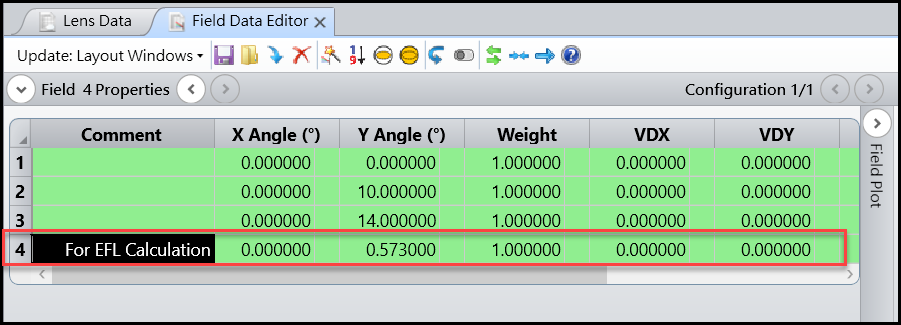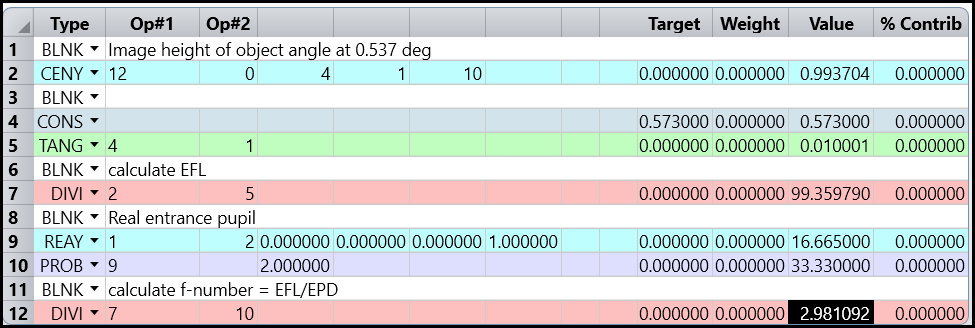The f-number (F/#) is defined as the focal length divided by the entrance pupil diameter. In ZEMAX, the Effective Focal Length (EFL) is calculated by tracing an on-axis parabasal ray, and the Entrance Pupil Diameter (EPD) is the diameter of the paraxial image of the stop in object space. However, measuring EFL with a single ray in the real world is challenging, and the paraxial EPD image doesn't match the actual EPD image. This often results in a discrepancy between the Image Space F/# in ZEMAX and the measured f/#.
The measurable EFL is determined by measuring the image height with a known incident angle. The Trioptics ImageMaster® HR, a common testing device, projects a double slit from infinity with a half-width angle of about 0.573 degrees. EFL is calculated as ImageHeight / TAN(0.573 degrees). To calculate measurable EFL in ZEMAX, insert a field with a 0.573-degree object angle and use CNEY to obtain the image height. The EFL can then be calculated in the merit function editor. Using the built-in Double Gauss 28 degree field file as an example.


Calaulate measurement EFL by merit function

The EPD is typically measured as the diameter of the stop on the object side using measuring microscopes. Alternatively, the marginal ray height of the central field on surface 1 can determine the actual EPD. In ZEMAX, the EPD can be obtained using REAY. Combined with the measurable EFL, the measurable F/# can be calculated in the merit function editor.

In conclusion, this article discusses the methods and challenges of obtaining measurable F-numbers in ZEMAX. By employing practical measurement techniques combined with theoretical understanding, discrepancies may be minor in some examples but can be significant in other systems. Users can accurately calculate optical parameters in ZEMAX, such as the Effective Focal Length (EFL) and Entrance Pupil Diameter (EPD). This knowledge and capability are crucial for achieving precise optical design and analysis.

Reference



